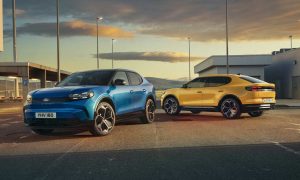Nope, this is a different type of engine.
The green screens used in filmmaking are dying fast and replacing them are massive LED screens that produce a far superior end result. The all-electric Ford F-150 Lightning which debuted just a few days ago, used a technology called ‘Unreal Engine’ to reveal some of its key features. You might have seen the official videos demonstrating the F-150 Lightning at a construction site, a charging station, a remote campsite and at a home serving as a backup power source; all these were brought to life in one studio.
Ford worked with The Mill and Chrome Productions to produce these videos. Chrome Productions turned to The Mill as a creative partner to produce these virtual sets. Using meticulously crafted CGI environments displayed on LED screens running Unreal Engine — a real-time gaming technology from Epic Games — the approach enabled Ford to reveal all the key features without the risk of public exposure and need for any transport logistics.
The incredible artists at The Mill built four environments — a suburban construction site, a finished home, a connected EV charging station and a remote campsite — and we brought these to life all within one studio. With a traditional production, showing the full range of product features across different environments would have taken a multi-day road trip with a moving company. With this innovative global collaboration, it instead became 72 hours of footage captured in a technology-driven studio. — Robert Chew, Vice President, Chrome Productions
This new production technique, which became more popular during the global pandemic due to global travel restrictions, is a game-changer for commercial filmmakers, especially for those with automotive clients looking to film pre-release products under strict embargo in a variety of photo-real “locations”.
Virtual Production offers a huge amount of creative flexibility and production advantages. For this project we combined LED screens with live camera tracking, enabling us to place the product in real-world environments that looked highly realistic. As we moved the camera, the perspective of the backgrounds shifted accordingly, enabling us to film convincing virtual scenes with incredibly believable cinematic fidelity. This is in-camera, live VFX work that will have a major benefit for both brand clients and creatives on-set. — Adam Grint, Creative Director, The Mill
Watch the video below to understand the Unreal Engine better —

Leave a Reply
Note: Comments that are unrelated to the post above get automatically filtered into the trash bin.








































